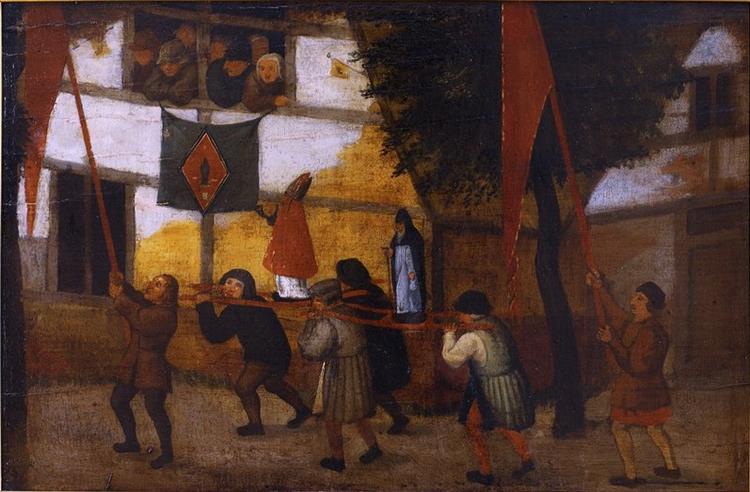Beschrijving
Pieter Brueghel the Younger's 17th-century painting A Procession is a fascinating testament to the cultural and social character of the time. As the son of the famous Pieter Brueghel the Elder, the young Brueghel continued his father's painting tradition, concentrating on themes of everyday life and popular festivals. Part of his catalogue on festivals and rural life, this work is characterised by rich complexity and a distinctive composition where every element comes to life.
In the centre of the painting, a crowd can be seen moving forward in a procession, suggesting an important event, possibly a religious celebration or a festival. The arrangement of the characters is charged with movement, generating an almost palpable sense of action in the scene. The crowd, made up of figures ranging from peasants to nobles, is rendered with great attention to detail, displaying different attitudes and clothing that reflect their social status. The way in which Brueghel groups the characters creates a rich visual narrative, with each figure having its own role in the unfolding of this communal celebration.
Colour plays a key role in the work. Brueghel employs a palette that evokes the warmth of the earth and the vibrant hues of folk costumes. Earthy tones predominate, nuanced with splashes of red and blue that highlight the diversity of the clothing. This use of colour not only contributes to the liveliness of the scene, but also establishes a contrast with the festive atmosphere, underlining the importance of the event taking place. From the clothing to the background landscape, each colour choice seems designed to capture the viewer’s attention and ground the visual narrative in the nuances of the celebration.
Details, often overlooked, are a hallmark of Brueghel's style. In A Procession, one can see elements that refer to the popular culture of the time: the musical instruments that accompany the crowd, the offerings that some carry, and the gestures of the figures, which express both joy and reverence, contribute to the sense of community that emanates from the work. This attention to the everyday world, to clothing, and to human interaction, reinforces the sense of authenticity of the scene, linked to the festivities of its time.
In addition to his technique, which supports the narrative with careful attention to detail and the interrelationship of the figures, Brueghel the Younger delves into the exploration of the traditions and social behaviour of the people. This work is part of a long tradition within the Flemish Renaissance, where interest in everyday life and popular celebrations developed in a notable way. Compared to his father's work, which often dealt with themes of nature and peasant life in a more allegorical way, Brueghel the Younger moves towards a more tangential and lively representation of the daily life of his society.
As one contemplates A Procession, one feels immersed in a specific moment in time, masterfully captured by an artist who not only inherited a legacy, but reinterpreted it for a new context. The work is a reminder of the importance of community and celebration in 17th-century culture, and as such, its relevance endures in the study of art and social history, making Pieter Brueghel the Younger a vital bridge between past traditions and contemporary expressions.
KUADROS ©, a famous painting on your wall.
Hand-made oil painting reproductions, with the quality of professional artists and the distinctive seal of KUADROS ©.
Painting reproduction service with satisfaction guarantee. If you are not completely satisfied with the replica of your painting, we will refund 100% of your money.

